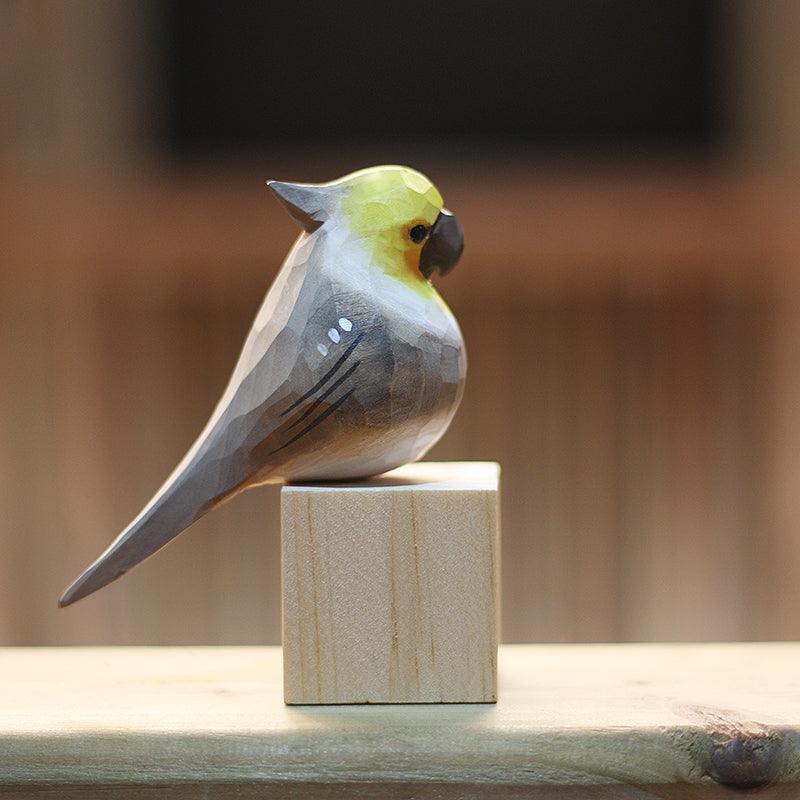
What to Know About Hand-Raising Cockatiels
Share
What to Know About Hand-Raising Cockatiels
 Cockatiels are one of the most popular companion birds—and for good reason! These charming, intelligent, and affectionate birds make excellent pets when raised in a caring and attentive environment. Hand-raising a cockatiel requires time, patience, and knowledge, especially in the early stages.
Cockatiels are one of the most popular companion birds—and for good reason! These charming, intelligent, and affectionate birds make excellent pets when raised in a caring and attentive environment. Hand-raising a cockatiel requires time, patience, and knowledge, especially in the early stages.
Here’s everything you need to know if you’re planning to raise a cockatiel from a chick.
1. Choosing the Right Age to Start 🐣
Ideally, cockatiel chicks should be hand-raised from around 2–3 weeks old.
-
Chicks younger than 2 weeks are fragile and require professional care
-
At 3 weeks, they begin developing pin feathers and can be safely transitioned to hand-feeding
-
Avoid separating a chick from its parents unless necessary or if bred for hand-rearing
2. Hand-Feeding Schedule & Formula 🍼
Cockatiels cannot eat seeds or pellets when they’re babies—they need hand-feeding formula.
-
Use a commercial hand-feeding formula made for parrots (follow package directions)
-
Feed with a syringe or spoon with soft tip
-
Temperature of the formula: 39–41°C (102–106°F)
-
Frequency:
-
3–4 weeks old: every 4–5 hours
-
5–6 weeks: 3 times/day
-
6–8 weeks: reduce to 1–2 times/day as they begin weaning
-
Tip: Never reheat old formula; make fresh every time.
3. Brooder Setup & Warmth 🌡️
 Until chicks are fully feathered, they need a warm brooder.
Until chicks are fully feathered, they need a warm brooder.
-
Use a box or small tank lined with soft towels
-
Add a heating pad under half the box or a heat lamp
-
Maintain temperature:
-
1–2 weeks: 35°C (95°F)
-
3–4 weeks: 30°C (86°F)
-
5 weeks+: slowly reduce as feathers grow
-
Always allow the chick to move between warm and cool zones.
4. Socialization & Bonding 💛
Hand-raised cockatiels are often very affectionate with their humans.
-
Gently talk, stroke, and handle your chick daily
-
Introduce toys and safe objects for exploration
-
Play soft music or sing to them—they love sound!
-
Avoid rough handling or sudden loud noises
Socialization helps them build confidence and trust.
5. Weaning to Solid Food 🍓
Around 6–8 weeks old, chicks begin to peck at solid foods.
Offer:
-
Soft pellets soaked in warm water
-
Chopped veggies and fruits (carrot, broccoli, apple)
-
Small seeds like millet
-
Clean, fresh water at all times
Let them explore different textures—they learn through beak play!
6. Grooming and Care ✂️
-
Bathing: Mist them gently or offer a shallow dish once they’re feathered
-
Nail trimming: Be careful—ask a vet if unsure
-
No wing clipping until they’re strong flyers (optional and controversial)
-
Vet check-ups: First visit around 2–3 months old
Clean their cage daily and provide chewable toys for beak exercise.
7. Daily Life & Lifespan 💫
A hand-raised cockatiel can live 15–20 years with good care.
 Needs:
Needs:
-
A cage with horizontal bars for climbing
-
Time outside the cage daily
-
Companionship—either from humans or another bird
-
Enrichment: swings, mirrors, bells, etc.
-
Patience—they’re intelligent but sensitive
Conclusion
Raising a cockatiel by hand is a rewarding journey. With proper feeding, warmth, gentle handling, and social interaction, you can raise a happy and healthy companion bird that will brighten your life for many years.







